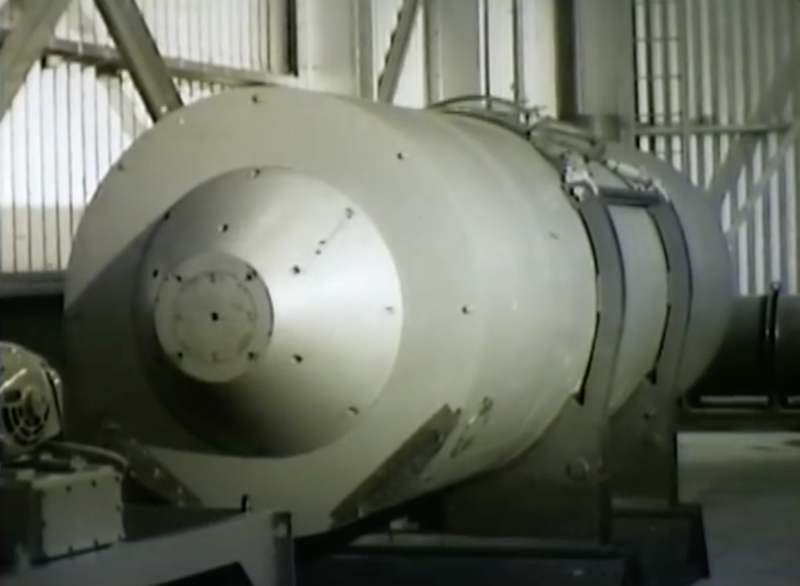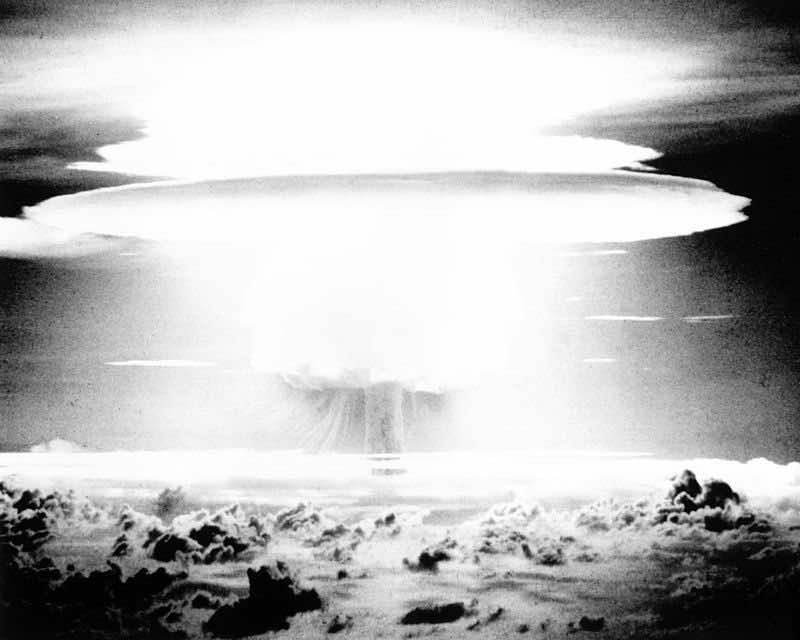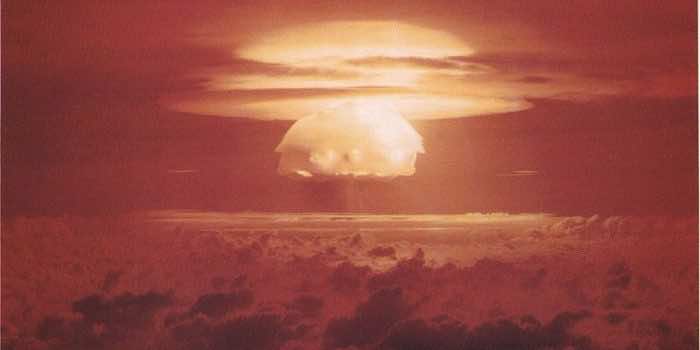Castle Bravo was the first in a series of high-yield thermonuclear weapon design tests conducted by the United States at Bikini Atoll, Marshall Islands, as part of Operation Castle. Detonated on March 1, 1954, the device was the most powerful nuclear device detonated by the United States and its first lithium deuteride fueled thermonuclear weapon. The explosion was more than two and a half times greater than expected and caused far higher levels of fallout and damage than scientists had predicted.
The Bravo test used a device called “Shrimp,” which relied on lithium deuteride as its fuel. The device was mounted in a “shot cab” on an artificial island built on a reef off Namu Island, in Bikini Atoll. A sizable array of diagnostic instruments were trained on it, including high-speed cameras trained through an arc of mirror towers around the shot cab.

The explosion yielded 15 megatons of TNT and released large quantities of radioactive debris into the atmosphere that fell over 7,000 square miles. The explosion resulted in the radioactive contamination of the inhabitants of nearby atolls, U.S. servicemen, and the crew of a Japanese fishing trawler (“The Lucky Dragon”), which had gone unnoticed in the security zone around the blast. The incident was the worst radiological disaster in U.S. history and generated worldwide backlash against atmospheric nuclear testing.
The “Shrimp” weighed approximately 23,500 pounds and was based on the Teller-Ulam thermonuclear weapon design. The explosion occurred at 6:45am local time. The bomb was in a form readily adaptable for delivery by an aircraft and was thus America’s first weaponized hydrogen bomb. Seconds after detonation, a mushroom cloud four and a half miles wide formed. It ultimately reached a height of 130,000 feet. The explosion left a crater on the ocean floor with a diameter of 6,500 feet and a depth of 250 feet. Castle Bravo was approximately 1,000 times more powerful than the “Little Boy” atomic bomb detonated over Hiroshima.
The fallout spread traces of radioactive material as far as Australia, India and Japan, and even the United States and parts of Europe. Though organized as a secret test, Castle Bravo quickly became an international incident, prompting calls for a ban on the atmospheric testing of thermonuclear devices.



